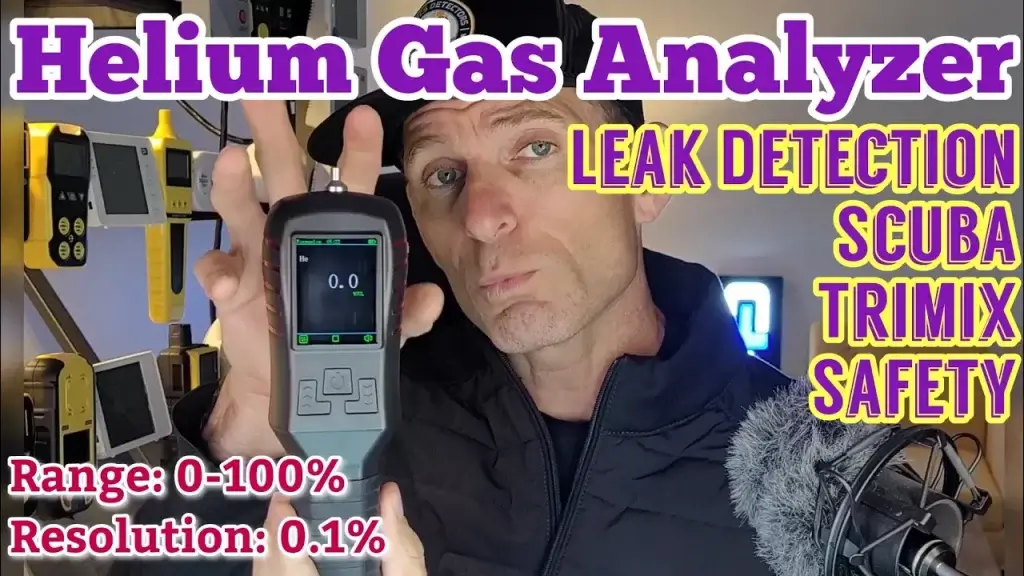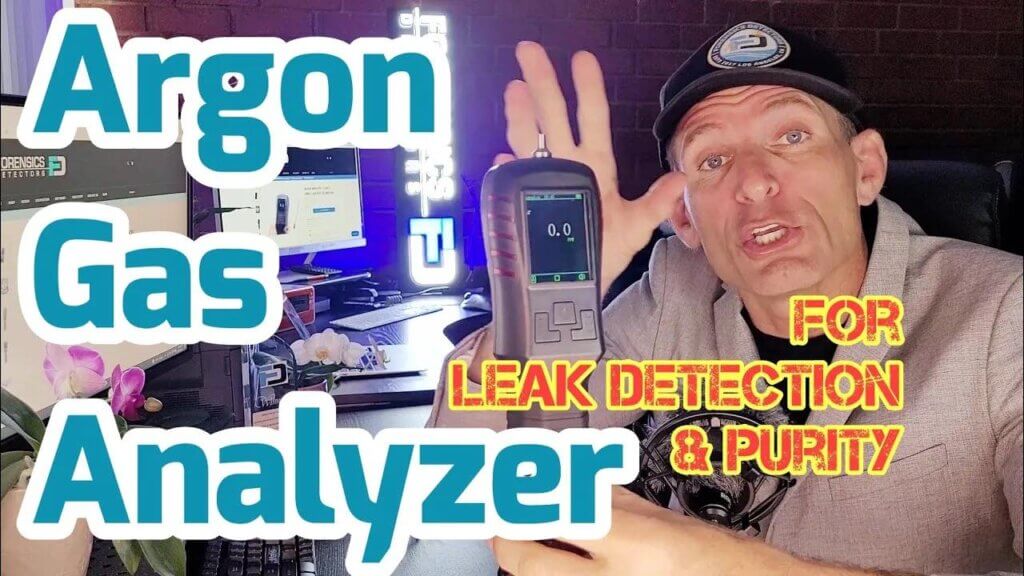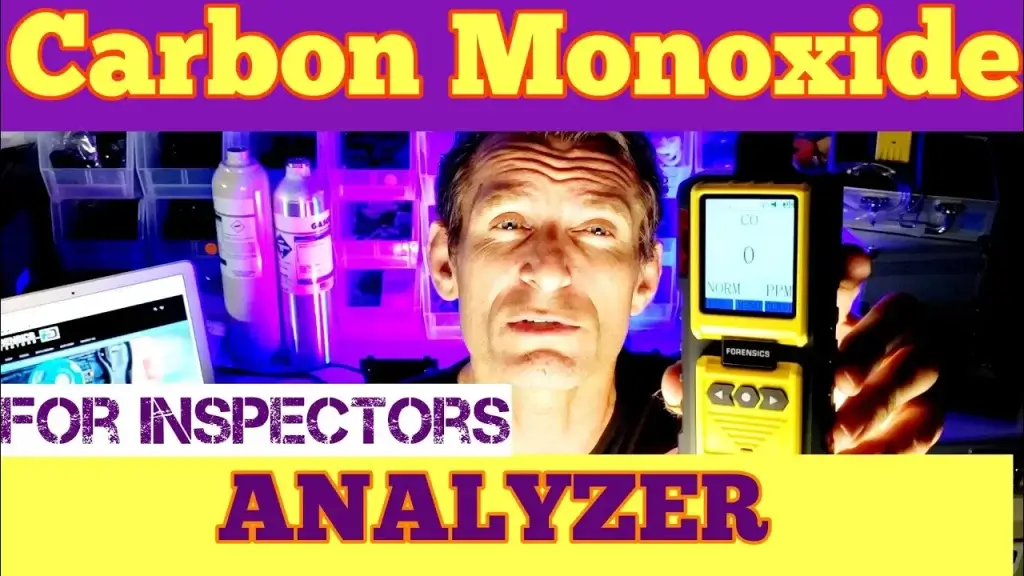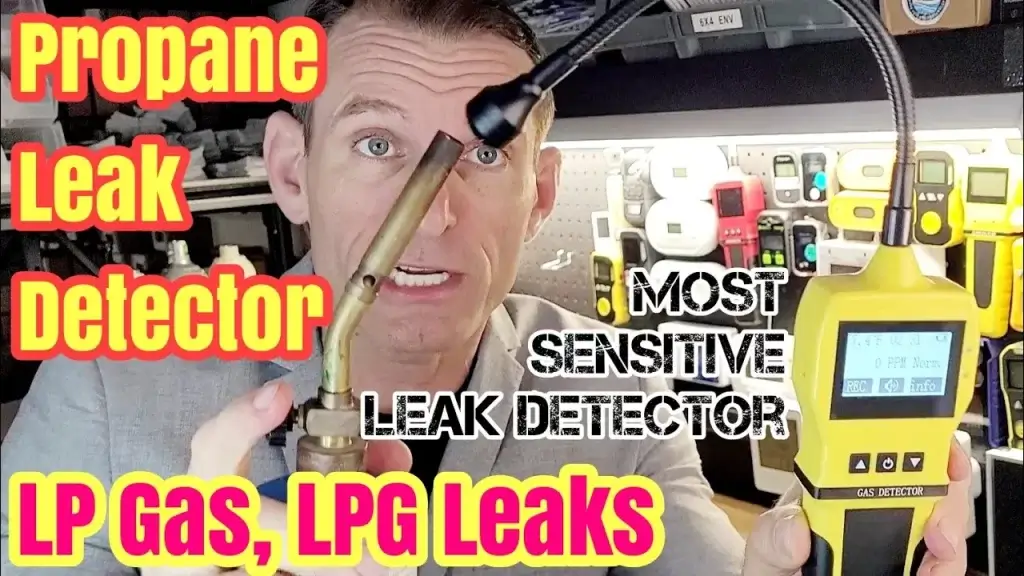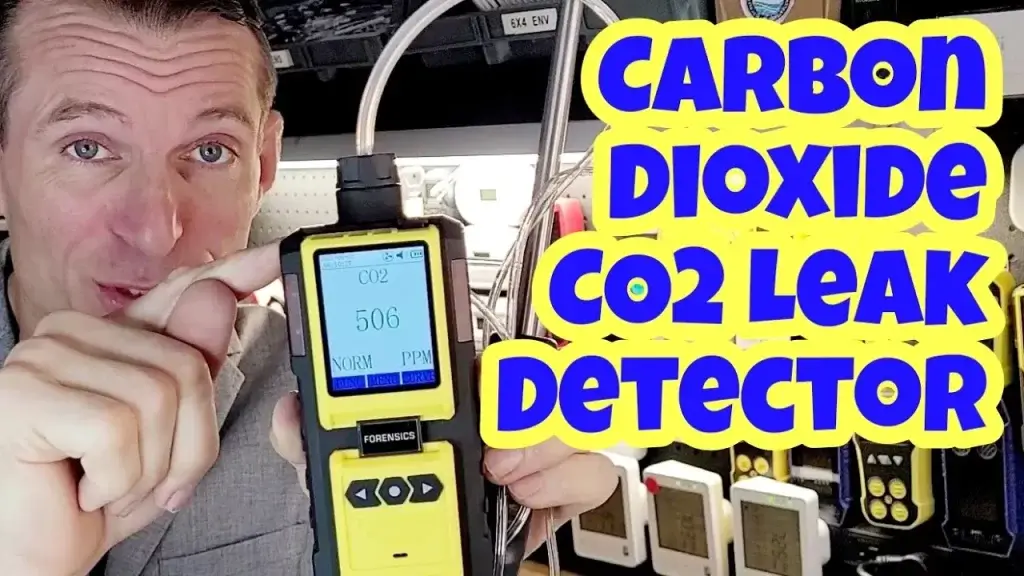Contents
- Where Do Carbon Monoxide Leaks Come From?
- Key Takeaways:
- Understanding Carbon Monoxide
- Common Sources of Carbon Monoxide Leaks
- Faulty Heating Systems
- Signs of a Faulty Heating System
- Issues with Fireplaces and Chimneys
- Malfunctioning Appliances:
- Car Exhaust and Garage Fumes
- Generators and Outdoor Equipment
- Protecting Yourself from Carbon Monoxide Leaks from Outdoor Equipment
- Blocked or Improperly Vented Flues
- Inadequate Ventilation: A Common Cause of Carbon Monoxide Leaks
- The Dangers of Inadequate Ventilation
- Testing for Inadequate Ventilation
- Preventing Inadequate Ventilation
- Carbon Monoxide Leaks in Commercial Buildings
- The Importance of CO Detectors
- Testing Your CO Detectors
- Replacing Your CO Detectors
- Testing for Carbon Monoxide
- Carbon Monoxide Meters vs. Analyzers
- Traveling Safely with CO Detectors
- Forensics Detectors Low Level CO Detector
- Conclusion
- FAQ
- Where do carbon monoxide leaks come from?
- What is carbon monoxide and why is it dangerous?
- What are the most common sources of carbon monoxide leaks?
- How can faulty heating systems contribute to carbon monoxide leaks?
- What issues with fireplaces and chimneys can lead to carbon monoxide leaks?
- How can malfunctioning appliances release carbon monoxide?
- How can car exhaust and garage fumes lead to carbon monoxide leaks?
- How can generators and outdoor equipment cause carbon monoxide leaks?
- How can blocked or improperly vented flues contribute to carbon monoxide leaks?
- Why is inadequate ventilation a concern in relation to carbon monoxide?
- Are carbon monoxide leaks a concern in commercial buildings?
- Why are CO detectors important in preventing carbon monoxide leaks?
- How can I test for carbon monoxide levels?
- Why is it important to have portable carbon monoxide detectors while traveling?
- What are the key takeaways from this article?
Where Do Carbon Monoxide Leaks Come From?
Carbon monoxide is an odorless, colorless gas that can be deadly in high concentrations. It is produced whenever fuel is burned, which means there are many potential sources of carbon monoxide leaks that we need to be aware of.
In this article, we’ll explore the most common sources of carbon monoxide leaks and understand the risks they pose to our health and well-being. By the end of this article, you’ll have a better understanding of the precautions that need to be taken to prevent carbon monoxide leaks and keep your family or employees safe.
Key Takeaways:
- Carbon monoxide is a colorless, odorless gas that can be deadly in high concentrations.
- Fuel burning appliances, such as gas-powered heating systems and appliances, can be sources of carbon monoxide leaks.
- Blocked or poorly vented flues, inadequate ventilation, and garage fumes are also common sources of carbon monoxide leaks.
- Installing carbon monoxide detectors is crucial in detecting leaks and ensuring early warning.
- Forensics Detectors have specialized low level CO detectors in identifying the source and cause of carbon monoxide leaks.
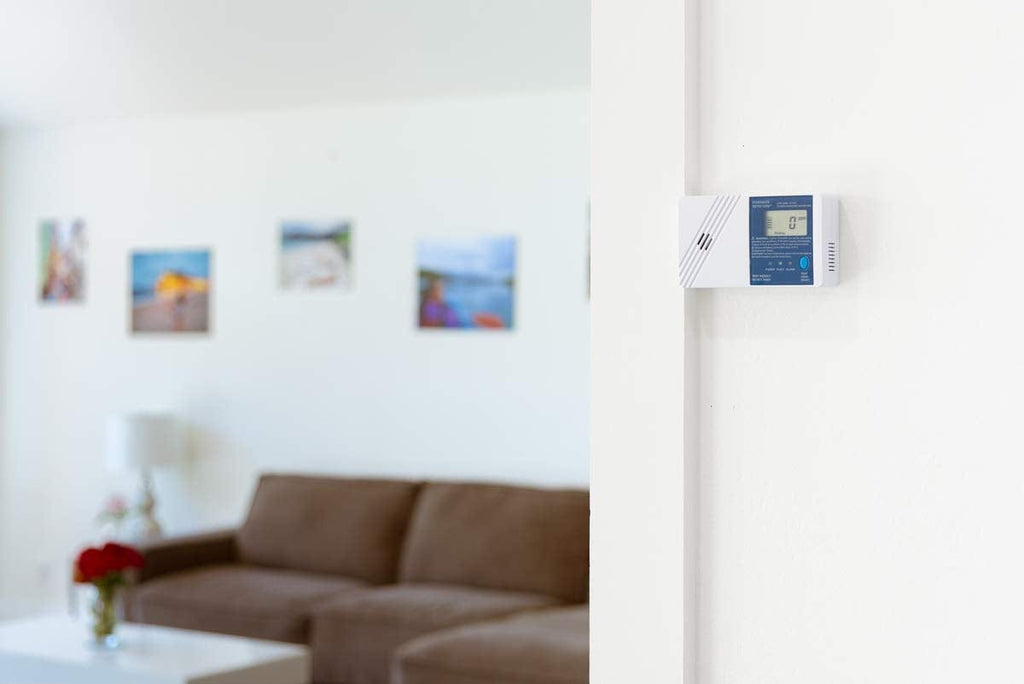
Understanding Carbon Monoxide
Carbon monoxide (CO) is a colorless, odorless, and tasteless gas that is formed when fuels like gas, oil, wood, and coal are burned. When inhaled, it binds with hemoglobin in the blood, reducing the amount of oxygen that can be transported to vital organs like the brain and heart. In high concentrations, it can lead to carbon monoxide poisoning, which can be fatal.
Unlike other gases, carbon monoxide cannot be detected by our senses, making it difficult to identify without the use of specialized tools like carbon monoxide detectors or meters. This is why it’s essential to be aware of the potential sources of carbon monoxide leaks in our homes and businesses and take necessary precautions to keep ourselves and others safe.
One of the best ways to safeguard against carbon monoxide leaks is by installing carbon monoxide detectors throughout your property. These devices quickly detect the presence of carbon monoxide and alert you to the potential danger. It’s important to check the batteries regularly and replace them at least once a year to ensure that the detectors are functioning properly.
Common Sources of Carbon Monoxide Leaks
Carbon monoxide leaks can come from a variety of sources in both residential and commercial settings. Here are some common culprits:
| Trapped exhaust and fumes from vehicles in enclosed spaces, such as garages. Cars left running in garages accidentally | Risk Factors |
|---|---|
| Faulty Heating Systems | Old or damaged furnaces, boilers, and gas-powered water heaters |
| Issues with Fireplaces and Chimneys | Improper maintenance and ventilation of fireplaces and chimneys |
| Malfunctioning Appliances | Gas-powered stoves, ovens, and dryers that are not functioning properly or not vented properly |
| Car Exhaust and Garage Fumes (including Aircraft) | Trapped exhaust and fumes from vehicles in enclosed spaces, such as garages. Cars left running in garages accidentally. Exhaust in CO also enters airplane cabins creating fast and high levels of exposure when flying. |
| Generators and Outdoor Equipment | Improper use of gas-powered generators and outdoor equipment. Running generators indoors or close to home openings such as open doors and windows |
| Blocked or Improperly Vented Flues | Ducts that carry exhaust gases from appliances to the outdoors are blocked or not vented properly. Sometimes corroded or poorly installed, or fallen section of vent exists redirects exhaust carbon monoxide to living spaces |
| Inadequate Ventilation | Insufficient ventilation in sealed spaces can cause a buildup of carbon monoxide |
| Carbon Monoxide Leaks in Commercial Buildings | Improper use of gas-powered generators and outdoor equipment. Running generators indoors or close-to-home openings such as open doors and windows |
It’s important to note that these sources can vary in risk depending on factors such as age and condition of equipment, proper maintenance and ventilation, and usage patterns. Regular inspections and early detection through carbon monoxide detectors can help prevent leaks and keep you safe.
Faulty Heating Systems
Heating systems, such as gas-powered furnaces or boilers, can be a significant source of carbon monoxide leaks if they are not functioning correctly. Because these systems are the most common culprit of carbon monoxide leaks, it is essential to ensure they are correctly installed, regularly inspected, and adequately maintained.
Faulty heating systems can lead to the buildup of carbon monoxide in the air, which can cause symptoms ranging from headaches and dizziness to nausea, confusion, and even death. Carbon monoxide is colorless and odorless, making it impossible to detect without special equipment, such as carbon monoxide detectors. Therefore, it is essential to have these detectors installed in your home or business and to regularly test and replace them to ensure they are functioning correctly.
Below is a classic image of a corroded heat exchanger that allows carbon monoxide gases to enter the heated air stream in a home heating system.
Signs of a Faulty Heating System
There are several signs that your heating system may be faulty and potentially leaking carbon monoxide into the air. These include:
- Yellow or flickering flames from gas-powered appliances
- Streaks of soot around the appliance
- Excessive condensation on windows and walls
- Pilot lights that frequently go out
- Unusually high levels of humidity in the air
If you notice any of these signs, it is essential to contact a licensed heating contractor immediately to ensure your safety and prevent potential carbon monoxide leaks.
“Carbon monoxide is a silent killer. That’s why it’s crucial to have your heating system properly installed and maintained to prevent leaks and ensure your family’s safety.”
In summary, faulty heating systems are a common source of carbon monoxide leaks and can pose a serious threat to your health and safety. It is essential to have your heating system regularly inspected and maintained by a licensed contractor and to have carbon monoxide detectors installed throughout your home or business.
Issues with Fireplaces and Chimneys
Fireplaces and chimneys can be a major source of carbon monoxide leaks if they are not properly maintained or vented. Over time, soot and debris can accumulate inside the chimney, blocking the flow of air and causing dangerous gases to seep back into your home.
In addition, if your fireplace is not functioning properly, it can cause carbon monoxide to build up in your home. Symptoms of carbon monoxide poisoning, such as headaches, nausea, and dizziness, can be vague and easily mistaken for other illnesses, making it critical to have a working carbon monoxide detector installed in your home.
To prevent carbon monoxide leaks from your fireplace or chimney, it’s important to have regular maintenance performed by a professional chimney sweep. This can help ensure that your chimney is free of debris and operating efficiently. You should also make sure that your fireplace is properly vented, and never attempt to use it if it is damaged or in need of repair.
“Regular chimney maintenance and proper venting can go a long way in preventing carbon monoxide leaks from your fireplace or chimney”
- Have your chimney inspected and cleaned annually by a professional chimney sweep.
- Make sure your fireplace is properly vented and free from damage or debris.
- Never use your fireplace if it is not functioning properly, or if it is in need of repair.
By taking these steps, you can help keep your home safe from the harmful effects of carbon monoxide leaks.
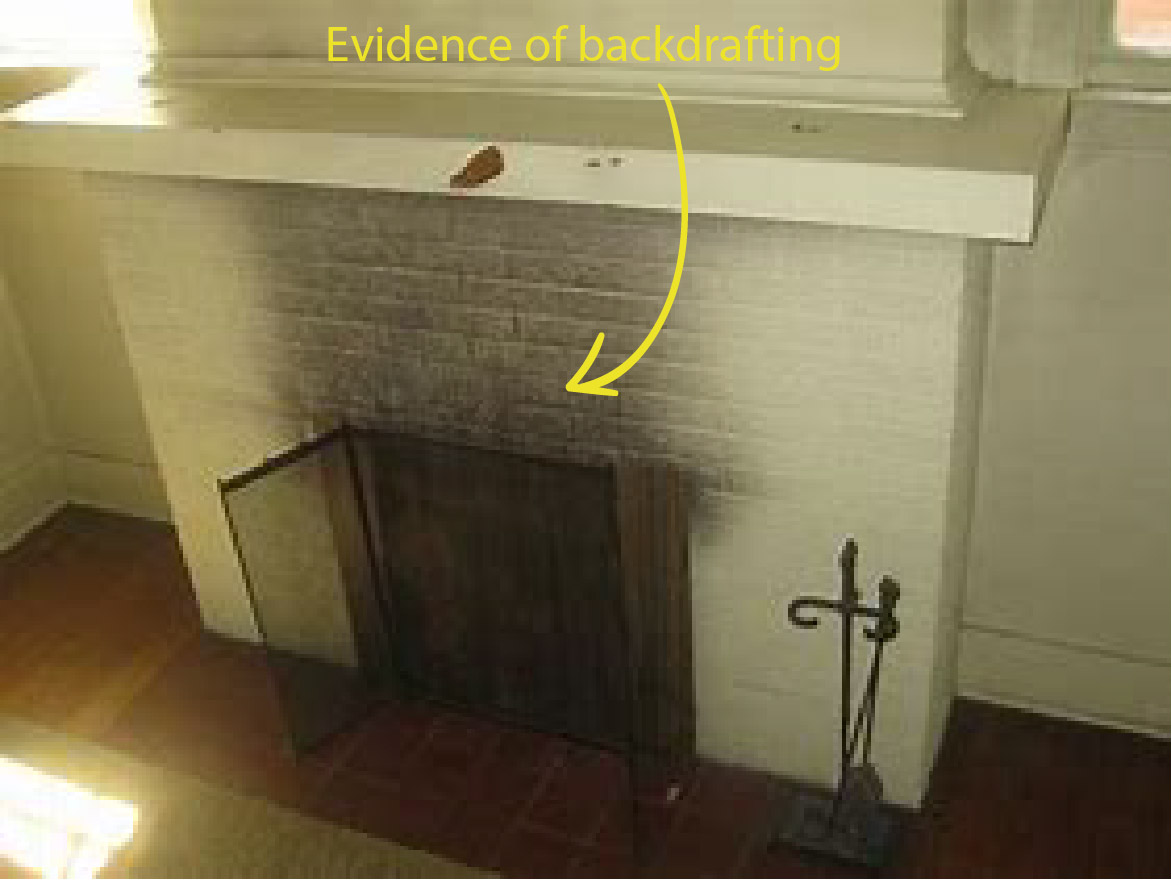
Malfunctioning Appliances:
If your gas-powered appliances are malfunctioning, you may be at risk for carbon monoxide leaks. Common appliances that can pose a threat include stoves, ovens, and dryers.
It’s important to get your appliances regularly serviced and maintained by a professional to ensure that they are functioning properly and not emitting dangerous levels of carbon monoxide. If you notice any strange smells or noises coming from your appliances, turn them off and contact a professional immediately.
Another way to prevent carbon monoxide leaks from appliances is to ensure proper ventilation. Appliances should always be used in well-ventilated areas, such as with a window or door open. Never use these appliances for any purpose other than what they were intended for, and never use gas-powered appliances as a source of heat.
“Getting your gas-powered appliances regularly serviced and maintained by a professional can prevent carbon monoxide leaks.”
Car Exhaust and Garage Fumes
Another potential source of carbon monoxide leaks is car exhaust and fumes from vehicles. This is especially true when these emissions are trapped in an enclosed space, such as a garage as a car is left running. It’s important to never leave a car running in a closed garage, even if the garage door is open, as carbon monoxide can quickly build up and be deadly.
According to the Centers for Disease Control and Prevention (CDC), more than 400 people die each year in the United States from unintentional carbon monoxide poisoning, with car exhaust being a leading cause of these deaths.
To prevent carbon monoxide leaks from car exhaust and garage fumes, make sure your garage is properly ventilated. Also, avoid using gas-powered tools or engines, such as lawn mowers, snow blowers, or generators, in enclosed spaces.
If you suspect a carbon monoxide leak from car exhaust or garage fumes, immediately evacuate the area and seek medical attention if symptoms are present. Symptoms of carbon monoxide poisoning can include headache, dizziness, nausea, vomiting, and confusion. In severe cases, loss of consciousness and death can occur.
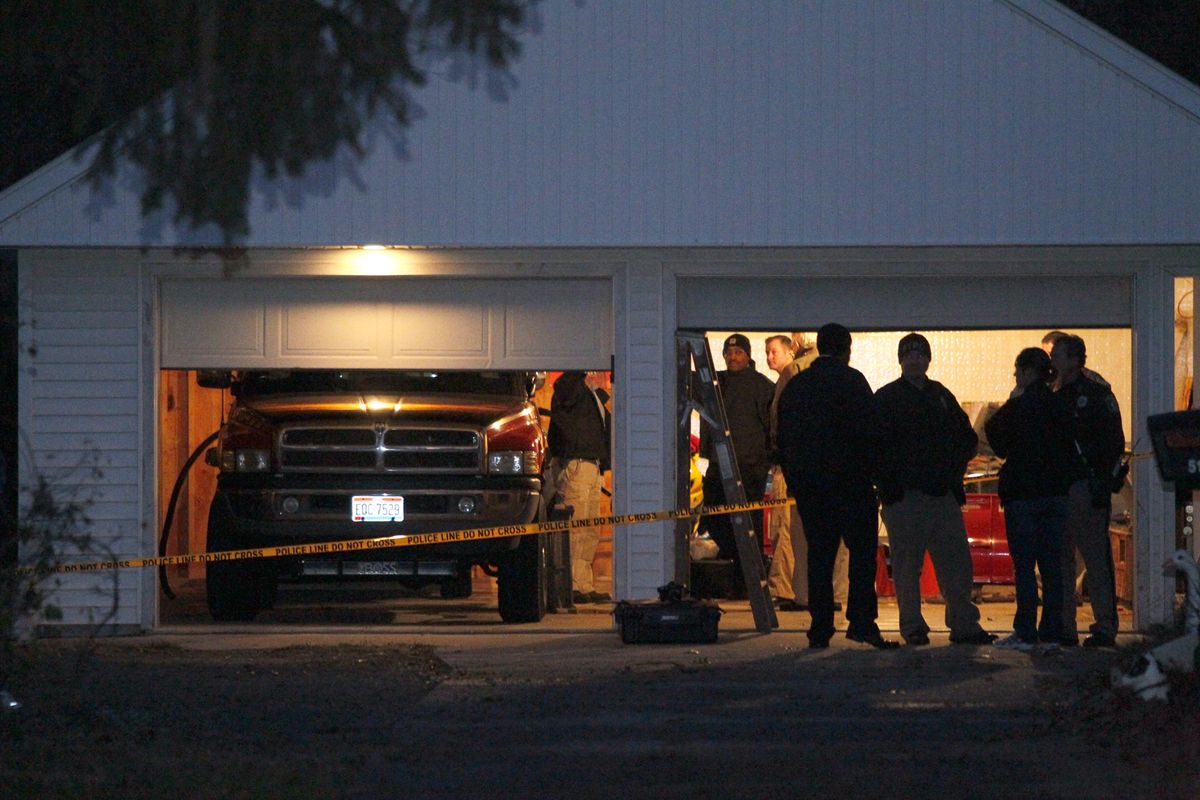
Generators and Outdoor Equipment
If you’re like me, you love spending time outdoors, whether it’s camping, tailgating, or just enjoying your backyard. However, it’s important to be aware of the potential dangers associated with outdoor equipment and generators. These devices can be a significant source of carbon monoxide leaks.
Generators produce carbon monoxide because of the way they operate. They burn gasoline, propane, diesel, or other fuels to generate electricity, emitting dangerous fumes that can be lethal if inhaled in large quantities. This is why it’s crucial to use generators in well-ventilated areas, away from living spaces or enclosed areas.
In addition to generators, gas-powered tools and equipment, such as lawnmowers, trimmers, and chainsaws, can also release carbon monoxide into the air. If you’re using these tools in an enclosed space, such as a shed or garage, it’s important to ensure proper ventilation.
It’s also essential to follow the manufacturer’s instructions when using outdoor equipment and generators. This includes maintaining the equipment regularly and ensuring it’s in good working condition. Using faulty or damaged equipment can increase the risk of carbon monoxide leaks.

Protecting Yourself from Carbon Monoxide Leaks from Outdoor Equipment
There are several steps you can take to protect yourself and your loved ones from carbon monoxide leaks originating from outdoor equipment:
- Always use outdoor equipment in well-ventilated areas. Avoid using them in enclosed spaces like garages or sheds.
- Follow the manufacturer’s instructions for usage, maintenance, and storage of outdoor equipment and generators.
- Regularly inspect and maintain your equipment to ensure it’s functioning correctly.
- Consider using battery-powered or electric equipment, which emits fewer fumes and is generally safer to use.
- Install carbon monoxide detectors near any enclosed areas where you use equipment or generators regularly. This can provide an early warning in case of a leak.
Blocked or Improperly Vented Flues
One of the most common sources of carbon monoxide leaks in residential and commercial buildings is blocked or improperly vented flues. Flues are the ducts that carry exhaust gases from appliances, such as furnaces and boilers, to the outdoors. When a flue becomes blocked or is not vented properly, the toxic gases that should be expelled outside can seep back into the building.
There are a few reasons why a flue might become blocked or improperly vented:
- Debris, such as leaves or bird nests, can accumulate in the flue, preventing proper ventilation.
- The flue may be damaged, causing cracks or holes that allow gases to leak into the building.
- The flue may be too small or improperly installed, leading to inadequate ventilation.
It’s important to have your flues checked regularly by a qualified professional to ensure they are in good working condition and not putting you at risk of a carbon monoxide leak. Signs of a blocked or improperly vented flue include soot buildup around the appliance, visible cracks or gaps in the flue, and a yellow or flickering flame on gas-powered appliances.
Below is a image of a Blocked Exhaust Vent from a Home
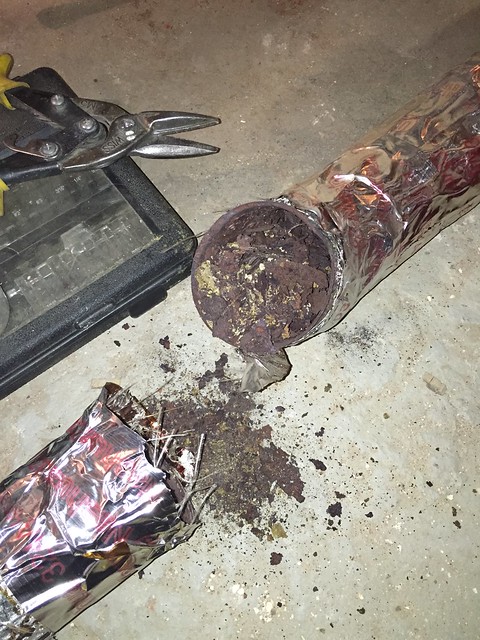
Inadequate Ventilation: A Common Cause of Carbon Monoxide Leaks
When it comes to preventing carbon monoxide leaks, one of the most important factors to consider is ventilation. Inadequate ventilation can cause a buildup of harmful carbon monoxide in your home or office. This can occur in tightly sealed spaces or areas with poor air circulation.
In fact, many of the common sources of carbon monoxide leaks we’ve discussed in this article, such as blocked flues or malfunctioning appliances, can be exacerbated by inadequate ventilation.
The Dangers of Inadequate Ventilation
When there is insufficient fresh air entering a room or building, carbon monoxide can accumulate and reach dangerous levels. Exposure to high levels of carbon monoxide can cause symptoms such as headaches, nausea, dizziness, and even death.
It’s essential to ensure that all areas of your home or business have adequate ventilation to prevent carbon monoxide buildup and protect your health and safety.
Testing for Inadequate Ventilation
There are several ways to test for inadequate ventilation in your home or office. One option is to use a carbon monoxide meter or analyzer, which can measure the levels of carbon monoxide in the air. Another option is to have a professional conduct an inspection to identify any areas with poor ventilation.
Preventing Inadequate Ventilation
To ensure proper ventilation and prevent carbon monoxide leaks, it’s important to maintain all ventilation systems in your home or office. This includes cleaning or replacing filters regularly and ensuring that all vents and ducts are clear and unobstructed.
You may also want to consider installing carbon monoxide detectors throughout your home or business to provide early warning in the event of a leak.
Carbon Monoxide Leaks in Commercial Buildings
Carbon monoxide leaks are not only a concern in residential buildings, but commercial buildings as well. In fact, commercial buildings may be even more susceptible to carbon monoxide leaks due to the larger size and more complex systems involved. This is especially true for industrial plants and manufacturing facilities, where equipment and processes can emit high levels of carbon monoxide.
Some common sources of carbon monoxide leaks in commercial buildings include:
| Source | Description |
|---|---|
| HVAC Systems | Heating, ventilation, and air conditioning (HVAC) systems can malfunction and release carbon monoxide into the building. |
| Industrial Equipment | Industrial equipment and machinery, such as generators, boilers, and furnaces, can emit high levels of carbon monoxide if not properly maintained. |
| Garage Fumes | Garages attached to commercial buildings can trap carbon monoxide from car exhaust and fumes from other vehicles. |
It’s essential for building owners and managers to prioritize the safety of employees and customers by addressing potential carbon monoxide leaks. This may include regular maintenance of HVAC systems and industrial equipment, proper ventilation, and installation of carbon monoxide detectors throughout the building.
As a commercial building owner or employee, it’s important to be aware of the potential risks of carbon monoxide leaks and take necessary precautions to ensure a safe working environment.
The Importance of CO Detectors
Carbon monoxide leaks can be deadly and difficult to detect because this gas is odorless and colorless. That’s why having CO detectors installed throughout your home or business is crucial in ensuring the safety and well-being of everyone inside.
CO detectors work by sounding an alarm when they detect high levels of carbon monoxide in the air. It’s recommended to have one installed on each level of your home, especially near sleeping areas. In commercial settings, the number and placement of CO detectors will depend on the size and layout of the space.
When shopping for CO detectors, look for ones that are tested and certified by a reputable organization, such as UL (Underwriters Laboratories) or CSA (Canadian Standards Association). Some detectors come with additional features, such as digital displays or smartphone connectivity, but be aware that these features may increase the price.
For added protection, low level CO detectors are also important for elderly, young, families and those with health conerns. Low level CO detectors alarm much faster and earlier to prevent the on-set of physiological effects of CO poisoning and to minimize CO exposure as much as possible.
Testing Your CO Detectors
It’s essential to regularly test your CO detectors to ensure they are functioning correctly. Most detectors have a test button that you can press to check if the alarm sounds. Check the manufacturer’s instructions for information on how often to test the detector.
Replacing Your CO Detectors
CO detectors have a limited lifespan, typically between 5-10 years. After this time, they may not detect carbon monoxide accurately or at all. Check the manufacturer’s instructions for information on when to replace your detector. It’s also a good idea to replace the batteries in your CO detector(s) at least once a year.
Remember, having a CO detector installed is not a substitute for proper maintenance of appliances and heating systems that can potentially leak carbon monoxide. Always ensure that appliances are regularly serviced and inspected, and that proper ventilation is in place.
“Carbon monoxide is the leading cause of accidental poisoning deaths in America. All of us have a responsibility to learn about the dangers of carbon monoxide and to take action to prevent carbon monoxide poisoning.”
Testing for Carbon Monoxide
Testing for carbon monoxide is crucial in ensuring a safe and healthy living environment. There are various tools and devices available for testing carbon monoxide levels, including:
- Carbon Monoxide Meter/Analyzer/Monitor/Analyser/Sensor/Tester/Sniffer: These devices measure the concentration of carbon monoxide in the air and provide instant readings. They are available in both portable and stationary models and can be used by professionals or homeowners.
- Professional Inspection: A professional inspection by a licensed inspector can also be done to ensure that all appliances and systems are functioning properly and that there are no carbon monoxide leaks. This is especially important for commercial buildings, where the risks can be much higher.
It is important to note that carbon monoxide detectors are not the same as carbon monoxide meters or analyzers. Detectors are designed to warn occupants of dangerous levels of carbon monoxide, while meters and analyzers measure the amount of carbon monoxide present in the air. While detectors are important for providing early warning, they should not be relied upon as the sole means of detecting carbon monoxide in a living space.
Carbon Monoxide Meters vs. Analyzers
Carbon monoxide meters and analyzers are similar in function, but there are some key differences between the two:
| Carbon Monoxide Meter | Carbon Monoxide Analyzer | |
|---|---|---|
| Function: | Measures the concentration of carbon monoxide in the air and provides instant readings. | Measures the concentration of carbon monoxide in the air and provides continuous monitoring and recording of readings over a period of time. |
| Accuracy: | Somewhat less accurate than analyzers and may require calibration before use. | More accurate than meters and can be calibrated for greater precision. |
| Cost: | Less expensive than analyzers and more widely available for personal use. | More expensive than meters and typically used by professionals in commercial or industrial settings. |
Whether you choose to use a meter or analyzer, it is important to follow the manufacturer’s instructions carefully and regularly test and calibrate the device to ensure accurate readings. Testing for carbon monoxide can help prevent dangerous leaks and keep you and your loved ones safe.
Traveling Safely with CO Detectors
If you’re a frequent traveler like me, you know how important it is to stay safe while on the go. This includes being aware of the potential risks of carbon monoxide leaks, especially when staying in hotels or rental properties.
That’s why I always bring a portable carbon monoxide detector with me whenever I travel. These small devices are easy to pack and can provide peace of mind knowing that I’m protected from a potentially deadly gas.
When choosing a travel CO detector, make sure it is compact and lightweight.
It’s also important to know the warning signs of a carbon monoxide leak, such as headaches, nausea, and dizziness. If you experience any of these symptoms while traveling, immediately evacuate the area and seek medical attention.
Remember, carbon monoxide leaks can happen anywhere, so it’s better to be safe than sorry. Don’t forget to pack a travel CO detector on your next trip to ensure a safe and enjoyable journey.
Forensics Detectors Low Level CO Detector
Carbon monoxide (CO), often referred to as the “silent killer,” is an invisible, odorless, and tasteless gas with potentially fatal consequences. Early detection is crucial for safety, and certain individuals, such as the elderly, pregnant women, young children, and those with certain medical conditions, are particularly vulnerable to its harmful effects. To safeguard against carbon monoxide poisoning, it’s essential to have a reliable carbon monoxide detector in place. These detectors are vital for various settings, including personal safety, camping, RVs, cars, aircraft, emergency medical services, marine environments, ice fishing, and residential security.
Conclusion
As we’ve learned, carbon monoxide leaks can come from a variety of sources, from faulty heating systems to car exhaust and garage fumes. It’s crucial that we take the necessary steps to prevent these leaks, such as properly maintaining our appliances and ensuring adequate ventilation in our homes and businesses.
Installing carbon monoxide detectors throughout our living spaces is also essential in detecting and alerting us to any potential leaks. Remember to test these detectors regularly and bring portable detectors with you when traveling.
Despite our best efforts, carbon monoxide leaks may still occur. In such cases, it’s important to rely on the expertise of CO professionals and forensics detectors to identify and resolve the issue.
Being proactive in preventing carbon monoxide leaks and safeguarding our lives is crucial. By understanding the sources and risks of carbon monoxide, and taking the necessary precautions, we can protect ourselves and our loved ones from this silent killer.
FAQ
Where do carbon monoxide leaks come from?
Carbon monoxide leaks can come from a variety of sources, including faulty heating systems, issues with fireplaces and chimneys, malfunctioning appliances, car exhaust and garage fumes, generators and outdoor equipment, blocked or improperly vented flues, inadequate ventilation, and industrial equipment in commercial buildings.
What is carbon monoxide and why is it dangerous?
Carbon monoxide is a colorless, odorless, and tasteless gas that is produced by the incomplete combustion of fuels. It is dangerous because it can interfere with the body’s ability to transport oxygen, leading to symptoms like headaches, dizziness, nausea, and even death in high concentrations.
What are the most common sources of carbon monoxide leaks?
The most common sources of carbon monoxide leaks include faulty heating systems, issues with fireplaces and chimneys, malfunctioning appliances, car exhaust and garage fumes, generators and outdoor equipment, blocked or improperly vented flues, inadequate ventilation, and industrial equipment in commercial buildings.
How can faulty heating systems contribute to carbon monoxide leaks?
Faulty heating systems, such as furnaces, boilers, and gas-powered water heaters, can often be a major source of carbon monoxide leaks. If these systems are not properly maintained or have cracks or leaks in their components, carbon monoxide can escape into the surrounding area.
What issues with fireplaces and chimneys can lead to carbon monoxide leaks?
Fireplaces and chimneys that aren’t properly maintained or vented can also lead to dangerous carbon monoxide leaks. Cracks or blockages in the chimney or problems with the flue can cause carbon monoxide to seep back into the home instead of being safely directed outside.
How can malfunctioning appliances release carbon monoxide?
Malfunctioning gas-powered appliances, such as stoves, ovens, and dryers, can release carbon monoxide into your home. Issues like damaged burners, clogged vents, or faulty combustion processes can result in the production and release of carbon monoxide gas.
How can car exhaust and garage fumes lead to carbon monoxide leaks?
Carbon monoxide leaks can occur when car exhaust or fumes from vehicles are trapped in an enclosed space, such as a garage. If the garage is connected to the house or there are gaps or leaks in the walls or door, carbon monoxide can seep into living areas.
How can generators and outdoor equipment cause carbon monoxide leaks?
Improper use of generators and outdoor equipment can cause carbon monoxide to seep into your home or living area. Generators, in particular, should never be used indoors or in enclosed spaces as they produce high levels of carbon monoxide during operation.
How can blocked or improperly vented flues contribute to carbon monoxide leaks?
Blocked or improperly vented flues, which are the ducts that carry exhaust gases from appliances to the outdoors, can result in carbon monoxide leaks. Blockages can occur due to debris or animal nests, while improper venting can cause gases to be redirected back into the building.
Why is inadequate ventilation a concern in relation to carbon monoxide?
Insufficient ventilation can lead to a buildup of carbon monoxide indoors, especially in tightly sealed spaces. Without proper ventilation, carbon monoxide produced by appliances or other sources can accumulate and pose a significant health and safety risk.
Are carbon monoxide leaks a concern in commercial buildings?
Yes, carbon monoxide leaks can also occur in commercial buildings. Industrial equipment and systems, such as boilers, furnaces, and ventilation systems, can be sources of carbon monoxide leaks if not properly maintained or operated.
Why are CO detectors important in preventing carbon monoxide leaks?
Installing carbon monoxide detectors throughout your home or business is crucial in detecting carbon monoxide leaks and ensuring early warning. These detectors can alert you to dangerous levels of carbon monoxide and give you the opportunity to take action and protect yourself and others.
How can I test for carbon monoxide levels?
There are various tools and devices available for testing carbon monoxide levels, including carbon monoxide meters, analyzers, monitors, sensors, testers, and sniffers. These devices can help you determine the presence and concentration of carbon monoxide in your environment.
Why is it important to have portable carbon monoxide detectors while traveling?
Having portable carbon monoxide detectors while traveling is important because you may encounter different environments and accommodations that could have unknown carbon monoxide risks. These detectors can provide an extra layer of safety and help protect you and your loved ones while on the go.
What are the key takeaways from this article?
The key takeaways from this article are the importance of understanding the sources of carbon monoxide leaks, the dangers of carbon monoxide, and the need for proactive prevention measures. By being aware of potential sources, installing CO detectors, and ensuring proper maintenance and ventilation, you can help protect yourself and others from the risks of carbon monoxide exposure.


